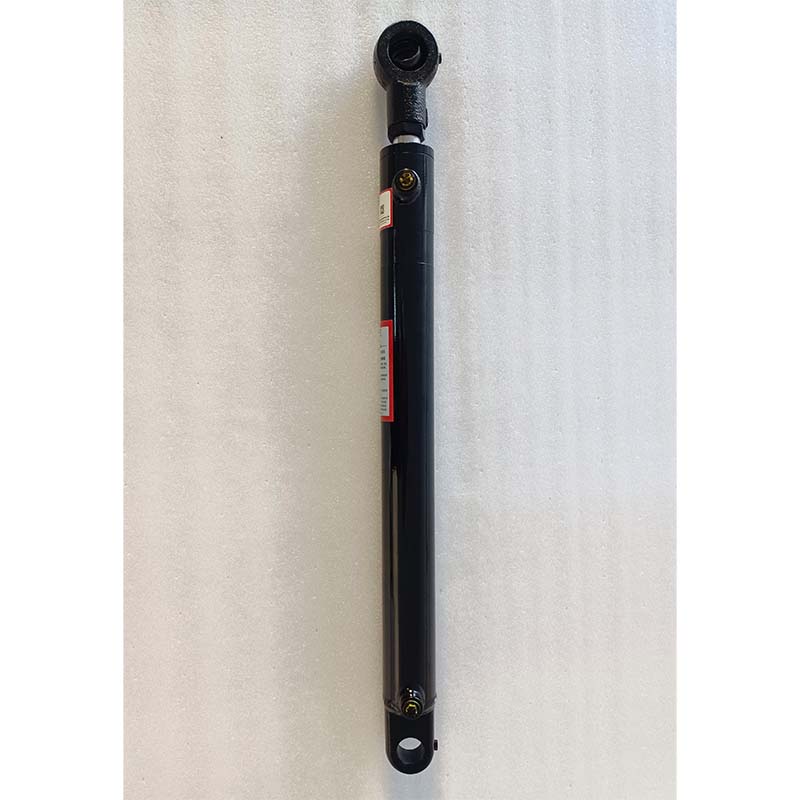Nov . 08, 2024 13:45 Back to list
Effective Methods for Bleeding High Quality Hydraulic Cylinders in Mechanical Applications
Ensuring Optimal Performance The Importance of Bleeding High-Quality Hydraulic Cylinders
Hydraulic systems are crucial in a wide range of applications, from industrial machinery to automotive systems, providing the power to lift, move, and control heavy loads effectively and efficiently. At the heart of these systems lies the hydraulic cylinder, which converts hydraulic energy into mechanical force. However, the performance of a hydraulic cylinder can be compromised by trapped air within the system, leading to inefficiencies and potential damage. This is where the process of 'bleeding' becomes essential, particularly for high-quality hydraulic cylinders.
Understanding Hydraulic Cylinder Bleeding
Bleeding a hydraulic cylinder involves removing trapped air from the hydraulic system. Air can enter the cylinder for various reasons, including leakage at seals or fittings or even due to improper fluid change procedures. When air is trapped within the hydraulic fluid, it can cause a range of issues. The presence of air bubbles can lead to spongy performance, decreased responsiveness, and reduced lifting capacity. Moreover, excessive air can result in cavitation, which may damage the hydraulic cylinder and associated components.
The Impact of Air in Hydraulics
The impact of air in hydraulic systems cannot be overstated. Air compressibility can cause unpredictable behavior in hydraulic applications, where precision is often critical. In applications requiring a steady and controlled movement, any fluctuation can lead to operational difficulties. High-quality hydraulic cylinders are designed to perform optimally, but even the best cylinders cannot function effectively with air present in the system.
Consequently, regular maintenance and bleeding of high-quality hydraulic cylinders should be part of any routine servicing protocol. This ensures that the system maintains its efficiency and prolongs the lifespan of the components involved.
The Bleeding Process
Bleeding a high-quality hydraulic cylinder typically involves several key steps.
1. Preparation Before beginning the bleeding process, ensure that the hydraulic system is turned off. It's crucial to observe safety precautions to prevent any accidents during maintenance.
2. Check Fluid Levels Verify that the hydraulic fluid levels are adequate. A low fluid level can exacerbate air entrapment issues, making bleeding ineffective.
3. Locate the Bleed Valve Most hydraulic cylinders are equipped with a bleed valve, usually located at the highest point of the cylinder. This is where air is typically trapped.
high quality hydraulic cylinder bleeding

4. Open the Bleed Valve Carefully open the bleed valve, allowing the trapped air to escape. It’s important to do this slowly to avoid sudden bursts of fluid.
5. Fluid Flow Observation As you open the valve, observe the flow of hydraulic fluid. Initially, you may see air bubbles escaping along with the fluid. Once the fluid runs consistently without bubbles, it indicates that most of the trapped air has been released.
6. Close the Valve Once all air has been bled from the system, close the bleed valve securely.
7. Test the System Finally, test the hydraulic cylinder to ensure it is operating smoothly and efficiently.
Benefits of Proper Bleeding
Regularly bleeding high-quality hydraulic cylinders offers several benefits
- Enhanced Performance By removing air, you ensure consistent and reliable operation, which is especially important in applications that require precision and dependability.
- Longevity of Components Air-related issues can cause wear and damage over time. Bleeding aids in prolonging the life of the hydraulic cylinder and other associated parts.
- Increased Safety Removing air from the hydraulic system reduces the risk of malfunctions, which can be dangerous in systems operating under high pressure.
- Cost Efficiency Proper maintenance, including regular bleeding, can prevent costly repairs and downtime due to unexpected failures.
Conclusion
In conclusion, bleeding high-quality hydraulic cylinders is a simple yet critical maintenance task that significantly impacts their performance and longevity. Whether in industrial applications, automotive systems, or any other hydraulic application, ensuring that the system remains free of air is essential for optimal operation. Developing a routine that includes scheduled bleeding can help maintain efficiency, improve safety, and ultimately save time and money in the long run. Emphasizing the significance of this procedure will lead to a more reliable hydraulic system ready to meet the demands of any task.
-
Fork Lift Power Units - Hebei Shenghan | Efficiency, Reliability
NewsJul.13,2025
-
1.5-Ton Turbocharged Cylinder-Hebei Shenghan|Hydraulic Solution,Energy Efficiency
NewsJul.13,2025
-
Auto Hoist Power Units-Hebei Shenghan|Efficiency&Industrial Lifting
NewsJul.13,2025
-
Double Acting Power Units-Hebei Shenghan|Hydraulic Solutions,Industrial Efficiency
NewsJul.13,2025
-
1.5 Ton Lifting Cylinder 70/82-40-290-535 - High-Performance Hydraulic Solution | Hebei Shenghan
NewsJul.13,2025
-
Fork Lift Power Units - Hebei Shenghan | Efficiency&Reliability
NewsJul.13,2025
